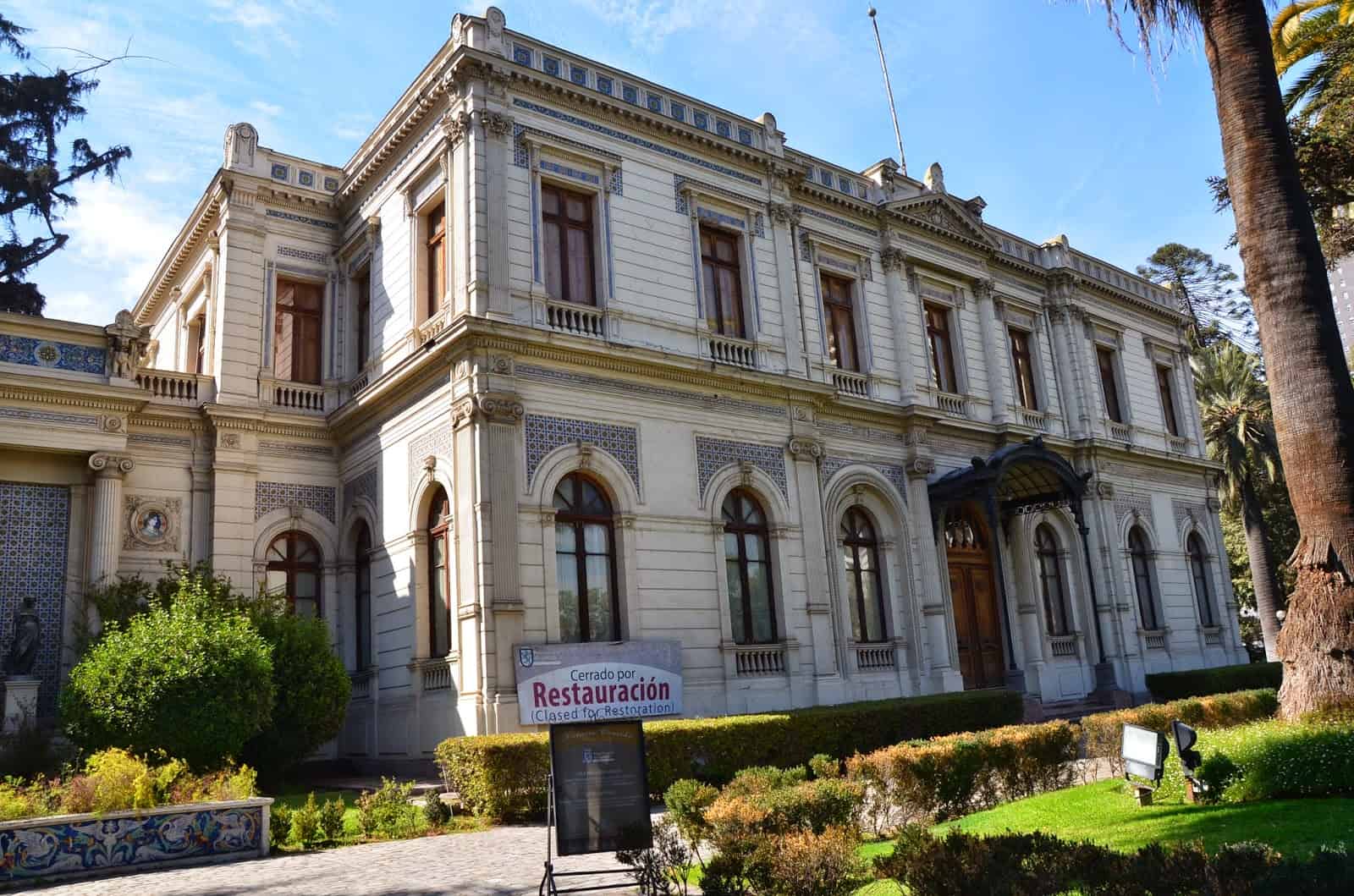Last updated on .
Barrio Dieciocho is a neighborhood in Santiago that used to be home to some elite families. It still has some nice architecture for a good hour or so of exploring.
Cousiño Palace
The most famous of all the palaces built in Barrio Dieciocho is the Cousiño Palace (Palacio Cousiño) on Calle Dieciocho. It was built in 1878 for one of the richest families in Santiago, the Cousiño family, who made their fortune in mining and shipping. It housed foreign dignitaries after 1940, and in 1968 it became a museum. Unfortunately, it was closed for restoration when I tried to visit.

Calle Dieciocho
Walking north on Calle Dieciocho to Alameda, I encountered a lot of nice buildings. Most of them served some sort of institution or university. Others were once lavish private mansions.
Some of the more well-known mansions included the Luis Besa Mansion (Mansión Luis Besa), Subercaseaux Mansion (Mansión Subercaseaux), and Eguiguren Palace (Palacio Eguiguren) (1918).
At the corner with Alameda, there’s a pink building called Íñiguez Palace (Palacio Íñiguez). It was built in 1908 and is one of the buildings that stood out the most in the entire barrio.
Confitería Torres
On the ground floor of Íñiguez Palace is Confitería Torres. This is the oldest café in Santiago, opening in 1879. It was a favorite of intellectuals, politicians, and aristocrats. The menu is not cheap and service was slow, but it was a nice experience.
I had the Barros Luco, named after the president who frequented the restaurant and always ordered it. It’s a sandwich with melted cheese and steak on toasted bread. It was pretty good but not filling.
Spanish Circle
On the next corner heading east on Alameda was the Spanish Circle (Círculo Español). It was a former aristocratic club in Irarrázabal Palace (Palacio Irarrázabal).
Calle San Ignacio de Loyola
Turning right on Calle San Ignacio de Loyola, there are a few more blocks of buildings to see, although some of them are still run down and not yet restored. One noticeable building is the Church of San Ignacio (Iglesia de San Ignacio). It was built in 1899.
One of my favorite blocks is a small part of Calle Padre Alonso de Ovalle. It contains several beautiful buildings.
Parque Diego de Almagro
At the southern end of Calle San Ignacio de Loyola sits Parque Diego de Almagro. It runs for a few blocks east to west and is full of trees giving shade to university students and mothers playing with their children.
Basilica of the Sacramentines
At the very east end of the park is the back of the Basilica of the Sacramentines (Basílica de los Sacramentinos). When you look at the dome, you might feel as if you’ve been transported to Paris. The church was modeled after Sacré-Cœur Basilica and was completed in 1931. The front end of the church has a small park and fountain across the street.
Getting There
Getting to Barrio Dieciocho is easy. The nearest metro station to Cousiño Palace is Toesca on the Yellow Line. Universidad de Chile metro station is about a ten minute walk down Calle Prat to the Basilica of the Sacramentines. Metro Los Héroes will leave you outside of Confitería Torres.